The eastern forests of North America hold a vibrant secret, a flash of azure and white that often announces its presence with a boisterous call. This is the Blue Jay, Cyanocitta cristata, a bird whose intelligence, striking beauty, and complex behaviors have captivated naturalists and casual observers alike for centuries. More than just a pretty face, the Blue Jay is a master of its environment, a crucial player in forest ecosystems, and a fascinating subject for anyone eager to delve deeper into the avian world.
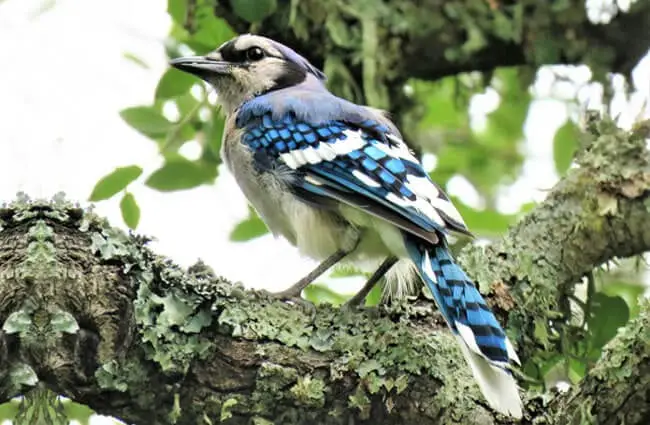
An Introduction to the Iconic Blue Jay
The Blue Jay is instantly recognizable. Its plumage is a brilliant sky blue on the back, wings, and tail, contrasting sharply with a white underside and a distinctive black collar that wraps around its head and forms a “necklace.” A prominent crest, which can be raised or lowered to signal excitement or aggression, crowns its head. White patches adorn its wings and tail, intricately barred with black, adding to its striking appearance. These medium-sized songbirds typically measure about 9 to 12 inches in length with a wingspan of 13 to 17 inches, making them a noticeable presence in any landscape they inhabit.
Their vocal repertoire is as diverse as their appearance. Blue Jays are renowned for their loud, often harsh “jay jay” calls, but they also produce a variety of musical whistles, bell-like sounds, and even surprisingly accurate imitations of other birds, most notably the calls of Red-shouldered and Red-tailed Hawks. This mimicry serves multiple purposes, from deterring predators to potentially deceiving other birds about the presence of a threat.
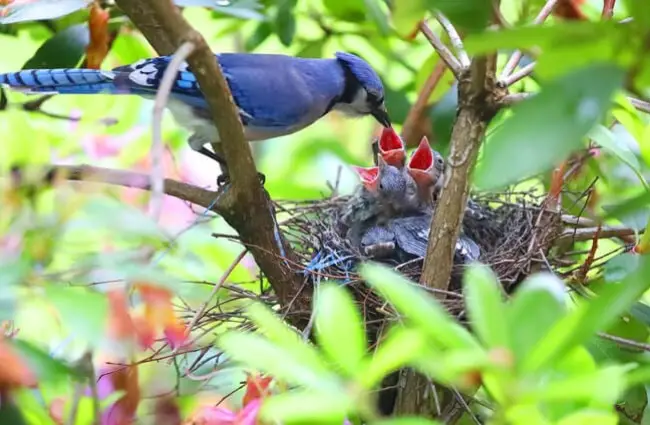
Where to Find These Azure Aviators: Habitat and Range
Blue Jays are widespread across eastern and central North America, extending from southern Canada down to Florida and as far west as eastern Texas. While some populations in the northern parts of their range may migrate south for winter, many Blue Jays are year-round residents, adapting to seasonal changes with remarkable resilience.
Preferred Environments
These adaptable birds thrive in a variety of habitats, making them a common sight for animal lovers and aspiring zoologists:
- Deciduous and Mixed Forests: Their natural stronghold, especially those rich in oak trees, which provide a crucial food source.
- Coniferous Forests: They can also be found in pine and spruce forests, particularly where mixed with deciduous trees.
- Urban and Suburban Areas: Blue Jays have successfully adapted to human-modified landscapes, frequently visiting parks, gardens, and backyards, especially those with mature trees and bird feeders.
- Forest Edges: They often prefer the transitional zones between open areas and dense woods, offering both foraging opportunities and protective cover.
Tips for Spotting a Blue Jay in the Wild
If you are an animal lover aiming to find a Blue Jay, here is how to increase your chances:
- Listen for Their Calls: Their loud and varied vocalizations are often the first sign of their presence. Learn to recognize their distinctive “jay jay” call and their hawk imitations.
- Look in Oak Trees: During autumn and winter, focus your search around oak trees, as acorns are a primary food source.
- Visit Bird Feeders: Blue Jays are frequent visitors to feeders, especially those offering peanuts, sunflower seeds, and corn.
- Observe Early Morning or Late Afternoon: They are most active during these times, foraging and communicating.
- Scan Tree Canopies: Blue Jays often perch high in trees, surveying their surroundings.
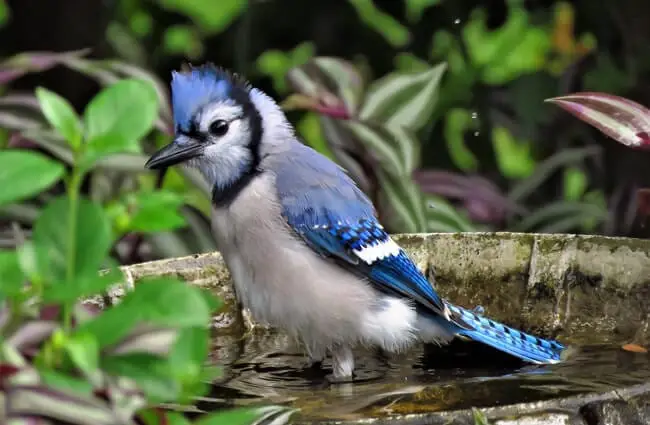
The Blue Jay’s Menu: A Diverse and Clever Diet
Blue Jays are omnivores with a highly varied diet, showcasing their adaptability and intelligence. Their foraging strategies are a testament to their cleverness.
Dietary Staples
For students researching Blue Jay’s diet, here is a breakdown:
- Nuts and Seeds: Acorns are a cornerstone of their diet, especially in fall and winter. They also consume beechnuts, hickory nuts, and various other seeds.
- Insects: During spring and summer, insects form a significant part of their diet, including caterpillars, grasshoppers, beetles, and spiders.
- Fruits and Berries: They enjoy a wide range of fruits and berries, such as wild grapes, cherries, and elderberries.
- Small Vertebrates: Occasionally, Blue Jays will prey on small frogs, mice, and even the eggs and nestlings of other birds. While this behavior can seem harsh, it is a natural part of the food web.
- Carrion: They are not above scavenging on carrion when available.
Food Caching: Nature’s Planters
One of the most fascinating aspects of their diet is their habit of caching food. Blue Jays are prodigious hoarders, particularly of acorns. They will carry multiple acorns in their gular pouch (a specialized throat sac) and bury them individually in the ground or hide them in tree crevices. A single Blue Jay can cache thousands of acorns in a season. While many of these caches are later retrieved, a significant number are forgotten, leading to the germination of new oak trees. This behavior makes them invaluable seed dispersers, playing a critical role in the regeneration and spread of oak forests.

Love and Life: Mating and Reproduction
Blue Jays typically form monogamous pairs, often for life. Their breeding season generally runs from April to July, with peak activity in May.
Courtship and Nest Building
The mating and reproduction process begins with courtship rituals that can involve elaborate displays, including bowing, head-bobbing, and mutual feeding. Once a pair bonds, they select a suitable nesting site, usually in the fork of a tree or dense shrub, 10 to 25 feet above the ground. Both sexes participate in building a sturdy, cup-shaped nest made of twigs, bark strips, leaves, moss, and sometimes even mud or artificial materials like string or cloth. The female typically lays 4 to 5 eggs, which are usually olive or buff-colored with brown spots.
Parental Care
Incubation, primarily performed by the female, lasts about 17 to 18 days. During this time, the male diligently brings food to his mate. Once the chicks hatch, both parents share the responsibility of feeding them. The young, known as fledglings, leave the nest after about 17 to 21 days but remain dependent on their parents for several weeks as they learn to forage and navigate their world. Blue Jays are known for their strong parental instincts, fiercely defending their nests from predators.
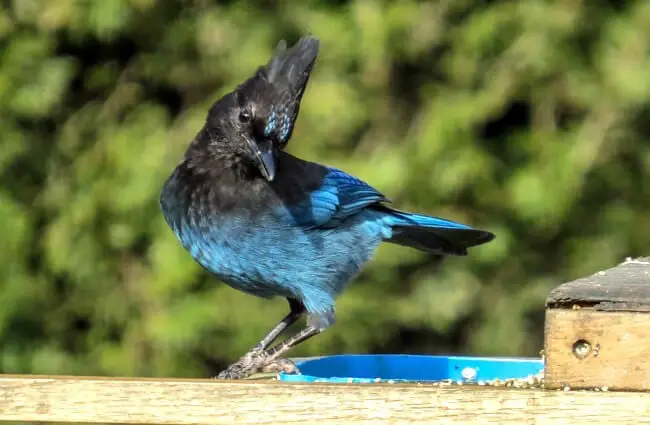
The Blue Jay’s Role in the Ecosystem and Interactions with Other Animals
Blue Jays are far more than just beautiful birds; they are integral components of their ecosystems, influencing and interacting with a multitude of other species.
Ecosystem Contributions
For students researching Blue Jay’s contribution to the ecosystem, consider these points:
- Seed Dispersal: As mentioned, their acorn caching behavior is vital for the propagation of oak trees, shaping forest composition. They are considered one of the most important dispersers of oak seeds.
- Alarm System: Their loud, distinctive calls serve as an effective alarm system for many other forest creatures. When a Blue Jay spots a predator, such as a hawk, owl, or snake, its raucous calls alert squirrels, deer, and other birds to the danger, potentially saving countless lives.
- Pest Control: By consuming large quantities of insects, especially during the breeding season, Blue Jays help to control insect populations, which can benefit forest health.
Interactions with Other Animals
- Predator and Prey: Blue Jays themselves are prey for larger raptors like hawks and owls, as well as arboreal predators such as snakes, raccoons, and domestic cats. Their intelligence and vigilance, however, make them challenging targets.
- Mimicry: Their ability to mimic hawk calls can be a defensive strategy, scaring away smaller birds or potential predators. It can also be used to clear out bird feeders, allowing the Blue Jay exclusive access.
- Competition: They compete with squirrels and other seed-eating birds for nuts and seeds, particularly during the leaner winter months.
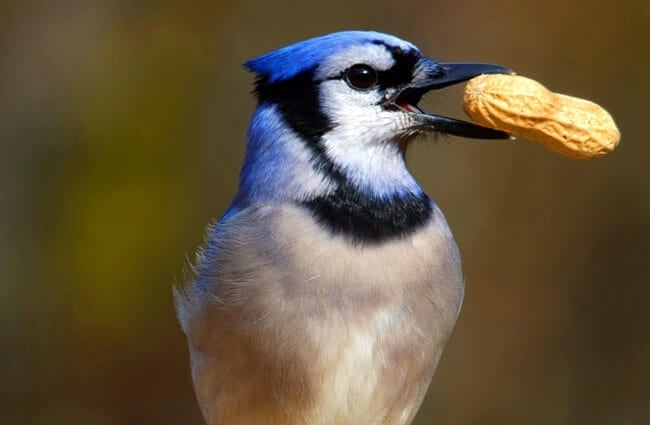
Blue Jays and Humanity: Culture and Coexistence
Blue Jays have a long history of interaction with humans, both in our cultural narratives and our daily lives.
Cultural Significance
For students researching Blue Jay’s contribution to human culture, here are some insights:
- Symbolism: In various Native American traditions, jays are often seen as symbols of intelligence, communication, and curiosity. Their vibrant color and bold nature make them memorable.
- Sports Mascot: Perhaps one of the most widely recognized cultural references is the Toronto Blue Jays, a Major League Baseball team, whose name and logo celebrate the bird’s distinctive appearance.
- Folklore: In some folklore, Blue Jays are depicted as tricksters or messengers, reflecting their cleverness and vocal abilities.
Interaction with Humans
Blue Jays are common backyard birds, often visiting feeders and becoming familiar sights. They can be quite bold and sometimes perceived as aggressive, especially when competing for food at feeders. However, their presence adds life and color to any garden.
Encountering a Blue Jay in the Wild: What to Do
If a hiker encounters a Blue Jay:
- Observe from a Distance: Appreciate their beauty and behavior without disturbing them.
- Listen: Pay attention to their calls; they might be alerting you to other wildlife or potential dangers.
- Do Not Feed Them Directly: While they visit feeders, avoid offering food by hand, as this can habituate them to humans and lead to dependency or aggression.
- Respect Their Space: If you find a nest, keep your distance. Blue Jays are fiercely protective parents and may dive-bomb perceived threats.
Beyond the Backyard: Expertise for Aspiring Zoologists and Zookeepers
For those pursuing a deeper understanding or involved in the care of Blue Jays, there are more nuanced aspects to consider.
Evolutionary History
Blue Jays belong to the family Corvidae, which includes crows, ravens, and magpies. This family is renowned for its high intelligence, complex social structures, and problem-solving abilities. Evolutionary studies suggest that corvids diverged from other passerine birds millions of years ago, developing advanced cognitive traits that allow them to thrive in diverse environments. The Blue Jay, with its sophisticated communication and caching behaviors, exemplifies these evolutionary advantages.
Caring for a Blue Jay in Captivity: A Zookeeper’s Guide
Caring for a Blue Jay in a captive environment, such as a zoo or rehabilitation center, requires specialized knowledge to ensure their well-being.
- Enclosure Requirements:
- Space: Blue Jays are active birds and require spacious enclosures that allow for flight. A large aviary with plenty of vertical space is ideal.
- Perching: Provide a variety of natural branches of different diameters and textures to promote foot health and enrichment.
- Substrate: A natural substrate like soil, mulch, or sand can encourage natural foraging behaviors.
- Shelter: Offer sheltered areas for privacy and protection from elements.
- Dietary Management:
- Variety is Key: Replicate their omnivorous diet. A base diet of high-quality insectivore pellets should be supplemented with fresh fruits (berries, grapes, apple pieces), vegetables (corn, peas, leafy greens), nuts (unsalted peanuts, walnuts, acorns), and live insects (mealworms, crickets).
- Calcium Supplementation: Ensure adequate calcium intake, especially for breeding birds, through cuttlebone or calcium powder dusted on food.
- Water: Provide fresh, clean water daily for drinking and bathing.
- Enrichment:
- Foraging Opportunities: Hide food items, scatter nuts in substrate, or use puzzle feeders to stimulate natural foraging behaviors.
- Novel Objects: Introduce new branches, toys, or objects regularly to prevent boredom.
- Social Interaction: If possible and appropriate, house Blue Jays in pairs or small groups to allow for natural social interactions.
- Health Monitoring:
- Daily Checks: Observe appetite, activity levels, droppings, and feather condition daily.
- Veterinary Care: Regular veterinary check-ups are essential, including parasite screenings and general health assessments.
- What to Avoid:
- Small Cages: Restrictive enclosures lead to stress and physical ailments.
- Monotonous Diet: A lack of dietary variety can lead to nutritional deficiencies.
- Lack of Enrichment: Boredom can result in stereotypic behaviors or aggression.
- Loud Noises/Sudden Movements: These can cause stress. Approach enclosures calmly.
- Human Food: Avoid processed human foods, sugary treats, or anything high in salt.
A Huge List of Interesting Facts About Blue Jays
- Blue Jays can carry up to 5 acorns at a time: one in their mouth, one in their throat, and 2-3 in their gular pouch.
- They are known to “ant” themselves, rubbing ants on their feathers, possibly to remove parasites or for the formic acid the ants produce.
- Their blue color is not due to pigment but to the scattering of light by the unique structure of their feathers, a phenomenon known as structural coloration. If a blue feather is crushed, the blue disappears.
- Blue Jays are highly intelligent and have been observed using tools in captivity.
- They have a complex social structure and communicate using a wide array of vocalizations and body language.
- While many Blue Jays migrate, some individuals in northern populations choose to stay year-round, demonstrating remarkable adaptability.
- They are known to raid the nests of other birds, consuming eggs and nestlings, a behavior that, while unsettling to some, is a natural part of their omnivorous diet.
- Their average lifespan in the wild is about 7 years, but they can live much longer in captivity, sometimes exceeding 20 years.
- Blue Jays can be quite territorial, especially during the breeding season, and will aggressively defend their nests.
- They are excellent at remembering food caches, often returning to retrieve nuts months after burying them.
Conclusion: The Enduring Charm of the Blue Jay
From their striking appearance and boisterous calls to their intricate social behaviors and vital ecological roles, Blue Jays are truly remarkable creatures. Whether you are a student delving into their biology, an animal lover hoping for a backyard visit, or an aspiring zoologist studying their complex intelligence, the Blue Jay offers endless opportunities for discovery. Their presence enriches our forests and our lives, reminding us of the vibrant tapestry of nature that surrounds us.

![Red Angus Closeup of a beautiful Red Angus cowPhoto by: U.S. Department of Agriculture [pubic domain]https://creativecommons.org/licenses/by/2.0/](https://animals.net/wp-content/uploads/2020/03/Red-Angus-4-238x178.jpg)




![Red Angus Closeup of a beautiful Red Angus cowPhoto by: U.S. Department of Agriculture [pubic domain]https://creativecommons.org/licenses/by/2.0/](https://animals.net/wp-content/uploads/2020/03/Red-Angus-4-100x75.jpg)

